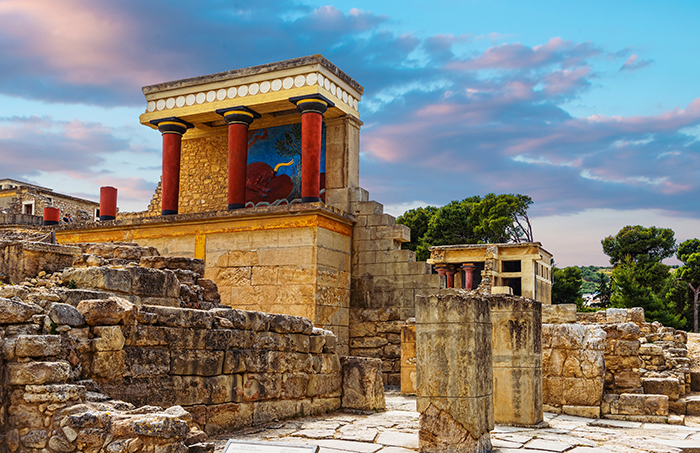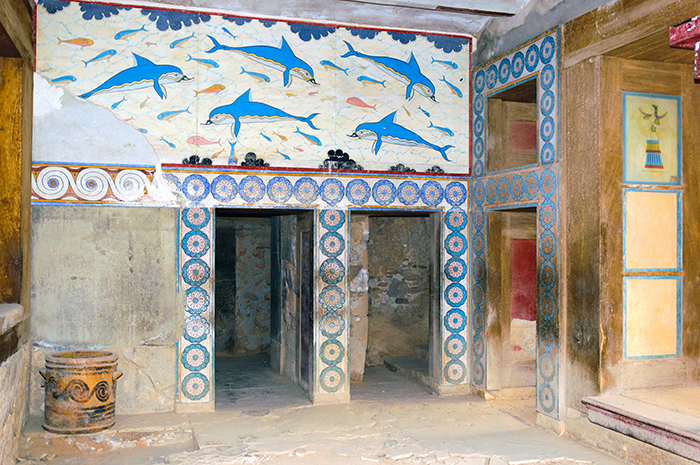Santorini 1600 BC and the End of Minoan Civilization
The island of Santorini (also known as Thera) is widely considered the most dramatic Greek island and one of the most beautiful places in the world. White homes are plastered on the side of rugged hills and travel is by donkey. Once the island was a massive volcano that erupted numerous times, but with one final and fatal eruption about 1600BC (the exact number is argued). The steep hillsides on the island were produced during this giant eruption, with massive quantities of lava and ash erupting from a small cone in the middle of what is left of the island. Now the island is like a cut-off horse-shoe with the ocean on all sides and the cone in the middle.
There were several phases in the eruption, including both lava fountains and the generation of deadly and hot mixtures of ash and gas. These mixtures can flow at speeds of 300 kilometers per hour and are often sprayed up into the air as massive columns many kilometers high that can collapse. The collapse of these columns into the ocean is thought to be a process that can generate a massive tsunami, as we will see in the 1883 eruption of Krakatoa, and it is thought that several phases of the Santorini eruption did this. The volcano had originally been a typical mountain-like structure with steep sides. In the later stages of its history, as the magma chamber emptied out, the mountain basically collapsed into a wide crater known as a caldera. The final two stages of the 1600 BC eruption led to the collapse of the caldera, and it's filling up with seawater. The final dramatic collapse which formed the horseshoe-shaped ring of the modern Santorini also generated the well-known megatsunami.
The phases of the eruption are known from well-preserved, layered records of the eruption that are up to 7 meters (23 feet) thick on Santorini but also found at archaeological sites including the well-known ruins in Crete. The eruption was certainly disastrous for the late Minoan civilization on Santorini, but what about elsewhere? The one-thriving Minoan civilization on Crete collapsed around this time and there have been numerous theories about how this related to the eruption. Was it the ash that blanketed the island? A giant earthquake associated with the eruption? Or the massive tsunami?

The tsunami deposit is found all over the eastern Mediterranean, including in deep-sea cores and in northern Crete, western Turkey, and as far away as Israel. There is much debate about its size and impact, however. Simulations have a tough time generating a large tsunami. However, a discovery about ten years ago in Crete provides some clues. At the Palikastro archeological site on the northeast tip of the island, a fascinating layer contained the Santorini ash, broken up building stones, marine fossil shells including those of beach and open ocean organisms, pieces of ceramics and even bones. The distribution of this layer on the rugged shore and in the areas above it suggests that the maximum wave height was 35 meters high! However, the impact of that wave on the Minoans is still debated and unlikely to have been the sole cause of the end of this civilization.

